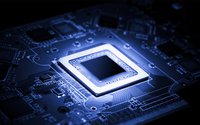What are the common testing methods for electrolytic capacitors? Component testing organization
Date:2022-11-08 14:40:22
What is the main purpose of metallographic analysis? 1. Learn about metal material slicing
Date:2022-11-08 14:36:34
Sharing of sample selection methods for metallographic analysis
Date:2022-11-07 16:28:00
Several Mosaic Methods of Metallographic Specimens
Date:2022-11-07 16:00:00
Introduction of commonly used methods for measuring the depth of decarburized layer
Date:2022-11-04 14:30:00
How to grind the metallographic specimen? Detailed step process
Date:2022-11-04 14:08:00
Summary of problems in X-ray weld inspection of electronic components
Date:2022-10-28 16:15:02
What are the contents of chip testing? IC Chip Reliability Test Standard
Date:2022-10-28 16:13:28
How to choose the appropriate burning mode for different chip models?
Date:2022-10-27 11:00:00




 Weixin Service
Weixin Service

 DouYin
DouYin
 KuaiShou
KuaiShou






























